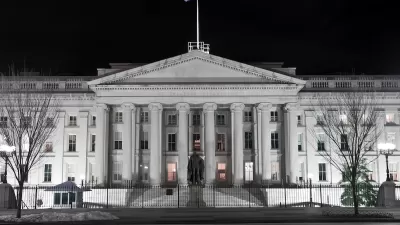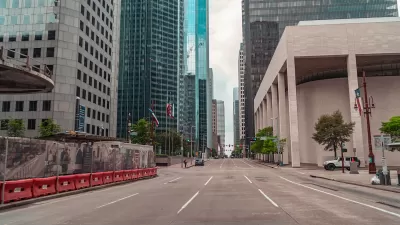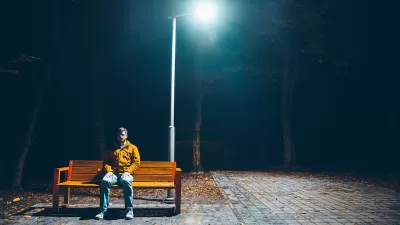An analysis of geotagged tweets reveals that city dwellers express positive emotions in green spaces and restaurants, while bus stops and transit elicited more frustrated reactions.

What parts of the city spark joy? Which parts fill citizens with sadness or rage? Those were the questions at the heart of a new study that analyzed close to 2 million tweets, geotagged at various locations in London and San Francisco, and compared their locations to the emotions they conveyed. Sri Taylor describes the results of the study in Bloomberg CityLab.
The study revealed that “Green and recreational spaces triggered the most positive emotions for city dwellers, and locations like swimming pools, sailing ports, coastlines and boat ramps had tweets with high levels of joy.” Hotels and restaurants were also associated with positive emotions.
Public transit, sadly, didn’t fare so well, even though London’s transit system is recognized as one of the best in the world. “Tweets made near train stations, bus stops and bridges congested with car traffic conveyed feelings of disgust and anger.” No mention of what emotions tweets posted from office buildings conveyed.
The researchers acknowledge the limitations of the study, but hope that data like this can help cities understand how to improve their infrastructure and public spaces.
FULL STORY: Where People Are Happiest — and Saddest — in Big Cities

Manufactured Crisis: Losing the Nation’s Largest Source of Unsubsidized Affordable Housing
Manufactured housing communities have long been an affordable housing option for millions of people living in the U.S., but that affordability is disappearing rapidly. How did we get here?

Americans May Be Stuck — But Why?
Americans are moving a lot less than they once did, and that is a problem. While Yoni Applebaum, in his highly-publicized article Stuck, gets the reasons badly wrong, it's still important to ask: why are we moving so much less than before?

Using Old Oil and Gas Wells for Green Energy Storage
Penn State researchers have found that repurposing abandoned oil and gas wells for geothermal-assisted compressed-air energy storage can boost efficiency, reduce environmental risks, and support clean energy and job transitions.

Poorest NYC Neighborhoods Pay Price for Delivery Boom
The rise of ‘last-mile’ e-commerce warehouses — and their attendant truck traffic and air pollution — is disproportionately impacting the most historically disadvantaged parts of the city.

Greening Oakland’s School Grounds
With help from community partners like the Trust for Public Land, Oakland Unified School District is turning barren, asphalt-covered schoolyards into vibrant, green spaces that support outdoor learning, play, and student well-being.

California Governor Suspends CEQA Reviews for Utilities in Fire Areas
Utility restoration efforts in areas affected by the January wildfires in Los Angeles will be exempt from environmental regulations to speed up the rebuilding of essential infrastructure.
Urban Design for Planners 1: Software Tools
This six-course series explores essential urban design concepts using open source software and equips planners with the tools they need to participate fully in the urban design process.
Planning for Universal Design
Learn the tools for implementing Universal Design in planning regulations.
Heyer Gruel & Associates PA
City of Moreno Valley
Institute for Housing and Urban Development Studies (IHS)
City of Grandview
Harvard GSD Executive Education
Salt Lake City
NYU Wagner Graduate School of Public Service
City of Cambridge, Maryland





























